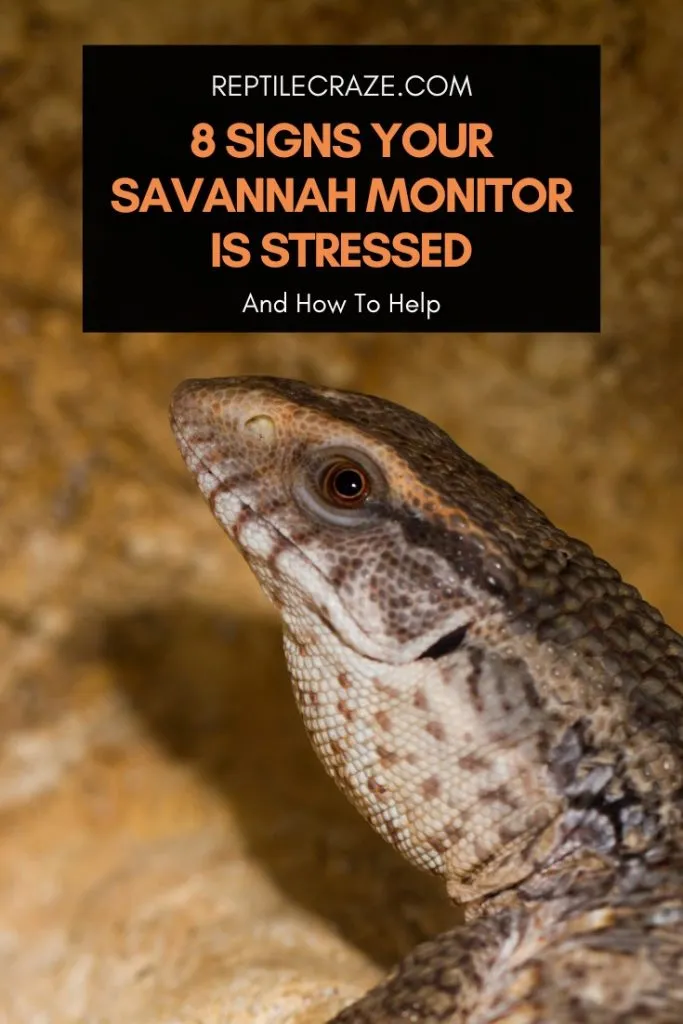
Is your Savannah monitor behaving differently? If so, it could be stressed, but how do you tell for sure?
Savannah monitors may show stress through decreased appetite, weight loss, decreased activity, increased aggression, threat displays, defecation, vomiting, and playing dead. These behaviors may be caused by environmental, social, nutritional, and handling stressors.
In this article, we outline 10 of the most common signs of stress in Savannah monitors. Read on to learn more if you are concerned that your monitor might be stressed and what to do about it.
Table of Contents
These Signs May Indicate Your Savannah Monitor Is Stressed
Let’s have a look at the stress signs first. We explain what causes the stress later in the article.
1. Not Eating
Savannah monitors are typically voracious eaters. One of the most common signs that your Savannah monitor isn’t feeling its best is a decreased appetite.
Stress is often a cause for a Savanna monitor to go off its feed. However, not eating can also be a sign of illness, so it is important to differentiate between the two.
It is critical to your monitor’s health that you identify and address the underlying causes of why it may not be eating as quickly as possible. You can read more about these causes here.
2. Weight Loss
Another sign of poor health or stress in Savannah monitors is weight loss.
Of course, this is a natural consequence of not eating. But if you are unsure if your monitor lizard has been eating enough or not, weight loss is an indication that it is not.
However, if your pet has been losing body mass but is still active and eating normally, this could be a sign of a more serious underlying condition that needs to be addressed by a veterinarian.
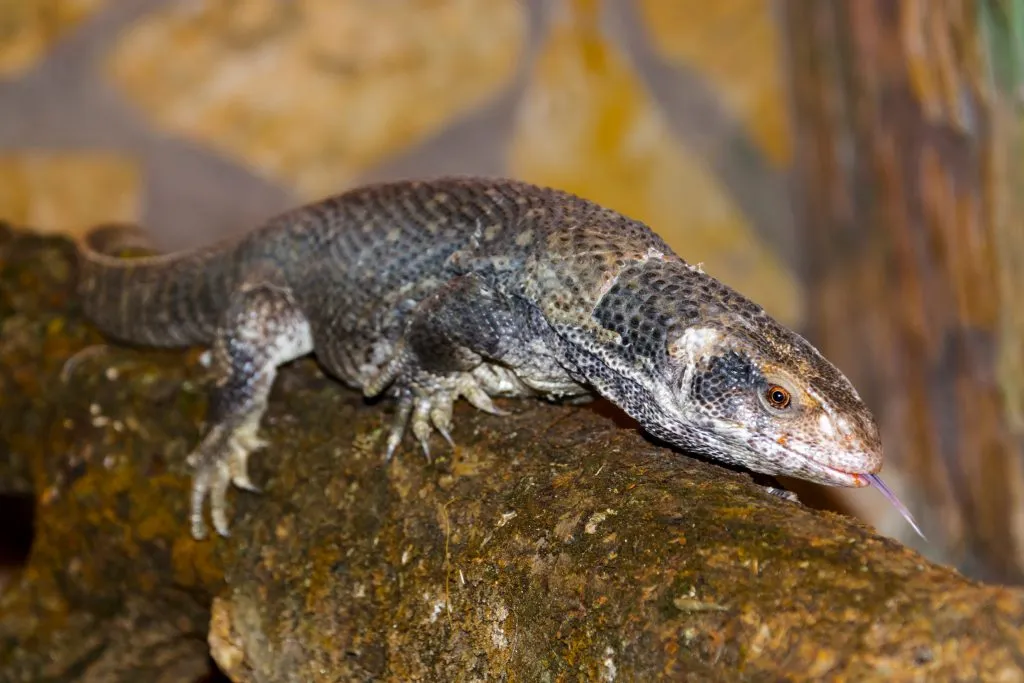
3. Decreased Activity
Savannah monitors are typically active during the day and sleep at night, so it is important to be observant of any changes in their behavior.
A stressed Savannah monitor will often seek solace in sleep to avoid any form of human and reptilian contact.
If your Savannah monitor begins sleeping more than usual or becomes sluggish, this could be a sign that something is amiss unless it is brumation.
Tip: Read our savannah monitor care guide to learn how to take proper care of your savannah monitor.
4. Increased Aggression
Stress can also cause a Savannah monitor to become more aggressive and territorial. If your pet suddenly becomes agitated or overprotective of its cage, this could be a sign that it is feeling stressed.
Aggression in captive reptiles is typically displayed in two distinct ways: between their cage mates or against their owners.
Maybe there’s another reptile around who has claimed parts of the habitat as theirs? Or perhaps you are the problem if you’re handling them differently or behaving differently around them than you usually do.
Either way, aggression usually stems from feeling uncertain or uneasy, which equals stress.
5. Threat Displays
Threat display is a behavior in which the Savannah monitor rapidly inflates its throat and arches its neck and body with a laterally (side-to-side) flattened pose that appears intimidatingly large, usually accompanied by hissing and tongue flicking.
This usually indicates that it feels threatened by something or someone in its environment and is trying to scare it away.
Other threat displays or defensive behaviors are:
- Hissing
- Puffing
- Puffing up their bodies
- Tail-whipping
6. Sudden Defecation
If a monitor experiences anxiety or distress, they may empty their cloaca (that is, poop!). This usually happens when they feel immediately threatened, such as when they are picked up or restrained.
7. Defensive Vomiting
Savannah monitors can vomit at any time. However, it most often occurs when these animals are confronted with unexpected and stressful situations.
8. Playing dead
Playing dead, also called “looping”, is a behavior that wild savannah monitors do to protect themselves. They flip onto their backs and latch onto one of their hind feet, making themselves into a “loop”.
This posture appears to be an evolutionary defense against predatory snakes since it would make them more difficult for the snake to swallow.
Common Causes Of Stress In Savannah Monitors
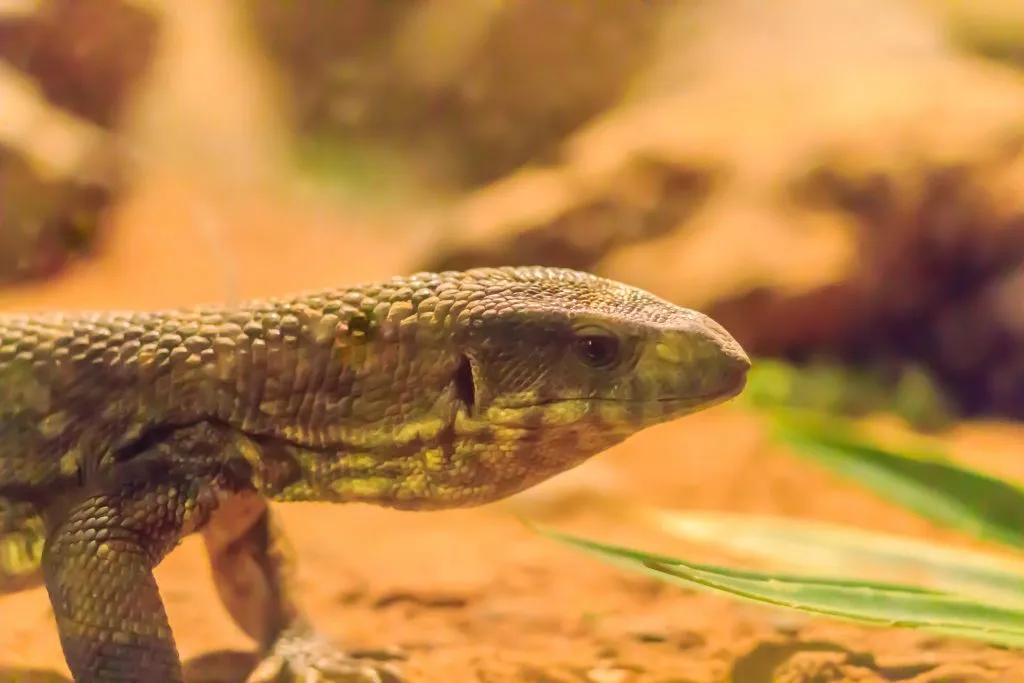
Understanding the causes of stress in savannah monitors is essential if you want your reptile friend to stay healthy and happy.
Common stressors can be broken down into four general categories: environmental, social, nutritional, and handling.
Environmental Stressors
These things could make your savannah monitor become stressed:
Habitat
- Incorrect Humidity
- Incorrect Temperatures
- Incorrect Lighting
- Incorrect Lighting schedule
- Substrates that do not allow natural behaviors like digging
- Missing hiding places
- Too small enclosures
- Other savannah monitors living in the same
tank - Live
food left in thetank could bother the monitor
Unfamiliar environment, sounds and smells
Your Savannah monitor is always going to be most comfortable and least stressed when in a familiar environment, but this is not always going to be possible.
You will likely be moving your monitor several times throughout its life, such as when you bring it home for the first time or move it to a larger enclosure.
It is natural for your pet to exhibit signs of stress during this period of transition, but eventually, it will relax.
It is important that you do not add any additional stressors such as forced handling or exposure to other animals during this time.
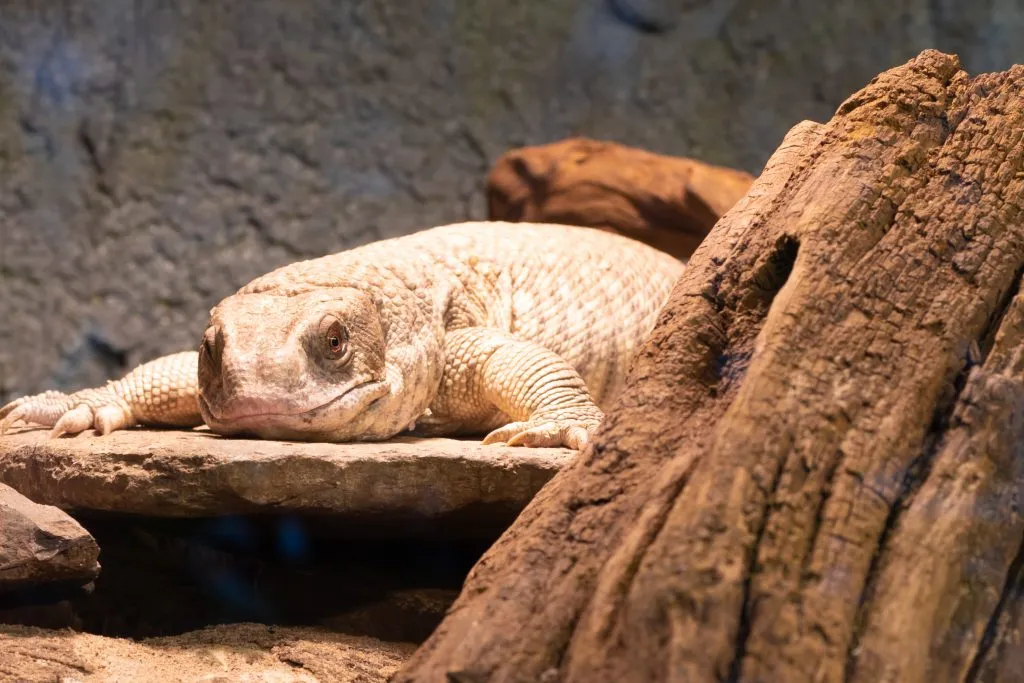
Social Stressors
Social stressors refer to stress caused by other animals. This usually means other monitors, but there are some exceptions.
Savannah monitors are solitary animals and very territorial. Therefore, stress is going to result if you try to house these animals together.
Because they are so territorial, they will aggressively defend their home. If the habitat is too small to allow the other animal to retreat, the dominant monitor will attack the other, which can result in serious injury.
In this situation, no matter which is the winner and which is the loser, both animals are undergoing stress that could be avoided simply by providing each with their own enclosure.
Stress can also be caused by animals outside of the Savannah monitor’s enclosure. If other reptiles are kept nearby where your pet can see or smell them, this may be enough to stimulate its territorial behavior.
Non-reptiles can be a source of stress as well.
Imagine if your cat were to sit and stare at your Savannah monitor all day, or attempt to “catch it” through the glass walls of its habitat – this would absolutely cause immense stress to your monitor.
Nutritional Stressors
Like any reptile, Savannah monitors have their own specific dietary requirements. In the wild, most of what they eat are invertebrates (insects, shellfish, etc.); therefore, this is the type of diet you should strive to provide your monitor.
A typical Savannah monitor diet consists of these invertebrates supplemented with the occasional small rodent such as feeder mice.
Nutritional value can be added by gut-loading insects or dusting them with calcium powder before feeding them to you monitor.
Poor nutrition results in all sorts of stress because of negative health impacts. Be certain to feed a diet appropriate to the age and size of your monitor to ensure it stays healthy and happy.
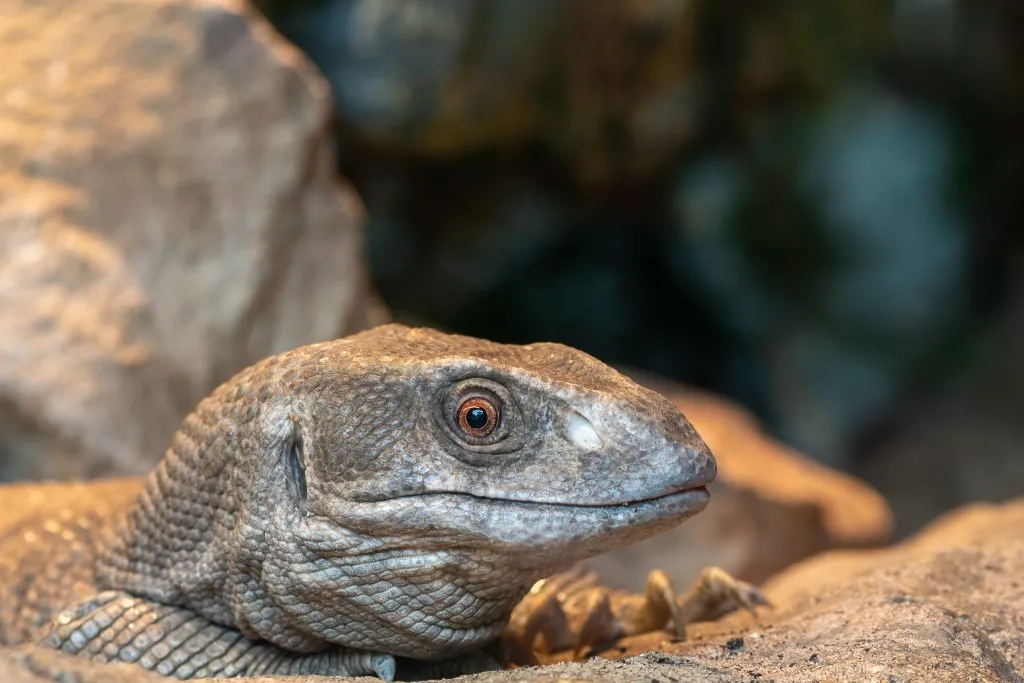
Stress Due To Handling
Savannah monitors can become stressed out when handled incorrectly or too often. To reduce the potential for stress-related issues, it is important for owners to know how to properly handle savannah monitors.
It is best to get monitors used to handling at a young age.
While it is possible to get older monitors accustomed to being handled, sometimes you may just have to accept that they do not want to be handled.
In these cases, it is best to keep handling to a minimum to minimize the resulting stress on the animal.
It takes patience to get a Savannah monitor used to being handled, and also to learn to do it correctly. This process should not be rushed, or it will undoubtedly result in loads of stress for both you and the monitor.
When To Consult A Veterinarian
So far, we’ve examined the signs of stress in Savannah monitors and some common causes of stress in these animals.
The first thing you need to do if you think your Savannah monitor is stressed is to identify sources of stress and remove them.
Hopefully, this article has provided the information that you need to point you in the right direction. But what if you’ve done everything you can think of to eliminate stress and your monitor is still showing signs of stress?
Unfortunately, many of the signs of stress in monitor are similar or identical to the signs of illness. Not eating and weight loss are two very important signs that must be sorted out sooner rather than later.
If your monitor is exhibiting signs of stress that don’t improve with environmental modifications and other interventions, it’s best to contact a veterinarian as soon as possible.
A vet can provide an accurate diagnosis and treatment plan to help ensure the health and well-being of your beloved pet.
- Enchi Ball Python: A Unique and Stunning Morph of Python regius - March 27, 2025
- Emerald Tree Monitor: The Enigmatic Green Guardian of the Rainforest - March 26, 2025
- The Egyptian Cobra (Naja haje): A Fascinating Serpent - March 25, 2025
